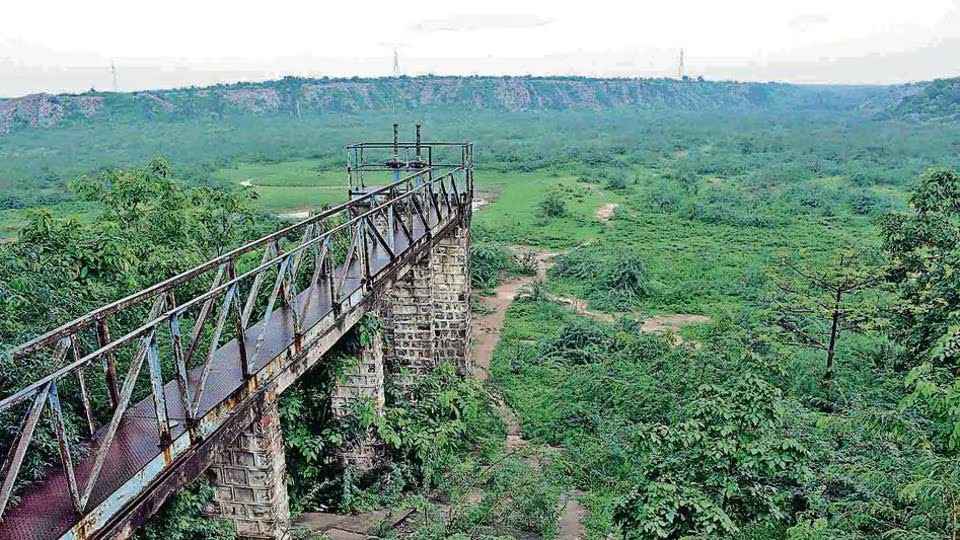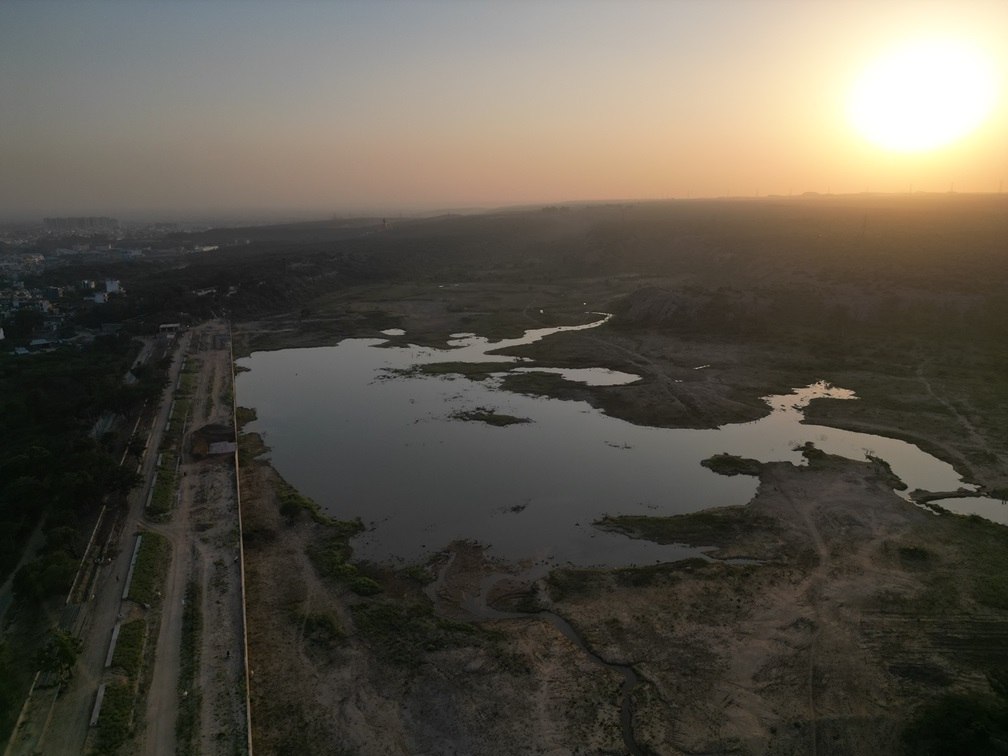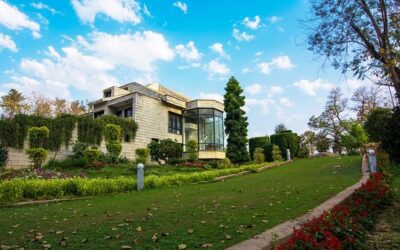Badkhal Lake, once a shimmering jewel nestled in Faridabad’s Aravalli hills, tells a story of loss and fragile revival. For decades it was one of Delhi NCR’s most beloved getaways, a place where families came to boat, picnic, and watch the sun set over calm waters. But in 2002, that blue expanse disappeared completely. The lake turned into a barren, cracked basin. Only in recent years, through artificial intervention, has Badkhal begun to hold water again. Its journey from life to death and back to a tentative rebirth captures a much larger global truth: lakes everywhere are vanishing under the combined pressure of climate change and human activity.
The drying of Badkhal was not caused by a single event but by a combination of human exploitation and a climate change. Rising temperatures have disrupted rainfall patterns and accelerated evaporation. Scientists predict that global lake evaporation will increase by about sixteen percent by the end of the century, with roughly a four percent rise for every degree of warming. In India, monsoon patterns have shifted dramatically. The southwest monsoon rainfall has decreased by six percent since 1951, while extreme rainfall events have increased. More water now falls in violent bursts, leaving less time for it to seep into the ground and recharge lakes. Between 1992 and 2020, more than thirty major Indian lakes showed clear signs of drying.
If the climate change crisis formed one half of the problem, human interference made up the other. In the Aravalli hills, years of illegal mining stripped away the natural catchments and shattered underground aquifers. The mining went so deep that it reached sea level, completely altering the drainage system. Instead of feeding the lake, rainwater began collecting in mining pits. Despite repeated warnings from the Supreme Court’s Central Empowerment Committee, the destruction continued. Add to this deforestation, urban expansion, and reckless groundwater extraction, and the result was inevitable. In some areas, the water table fell by nearly two hundred feet. By 2006, Badkhal’s forty-two-acre lakebed was dry enough to host cricket matches where tourists once enjoyed boating.
Climate Change & Effect on Disappearing Badkhal Lake
What happened at Badkhal is part of a worldwide pattern. More than half of the planet’s largest lakes and reservoirs have lost significant amounts of water in just three decades. Globally, the annual net loss equals about twenty-two billion metric tons, roughly the volume of seventeen Lake Meads. This loss directly affects one-fourth of humanity living in lake basins that are running dry. The Aral Sea in Central Asia has shrunk by over ninety percent since the 1960s, becoming a toxic wasteland. Lake Chad in Africa has lost nearly eighty percent of its area, intensifying poverty and conflict across the Sahel. Iran’s Lake Urmia has turned from turquoise to blood red because of salt-loving bacteria thriving in extreme salinity, and the surrounding region now suffers from dust storms that threaten millions. In the United States, Lake Mead has hit record lows due to years of drought and overuse.
India too faces its own lake emergency. Bengaluru, once celebrated as the City of Lakes, has lost more than two hundred of the two hundred sixty lakes it once had. Those that remain, like Bellandur and Varthur, are so polluted that they froth and catch fire. In Delhi, Bhalswa Lake and Welcome Jheel are shrinking fast. Even the ancient Surajkund, built in the tenth century, lies bone dry, sharing the same fate as Badkhal.
Climate change attacks lakes from many directions at once. Higher temperatures cause more evaporation. Studies have shown that for every one degree rise in air temperature, lake evaporation can increase by over a hundred millimeters. Shorter ice cover in cold regions also accelerates this loss, as open water absorbs more heat than reflective ice, creating a feedback loop of further warming and evaporation.

Rainfall patterns have also climate change dramatically. India’s monsoon has become unpredictable, with rainfall often arriving in intense bursts rather than steady showers. This shift means that less water infiltrates the soil to recharge groundwater and lakes. In many districts, rainfall extremes have become the new normal, swinging between drought and deluge within the same decade. These changes, influenced by phenomena like El Niño, La Niña, and the Indian Ocean Dipole, have made water cycles increasingly unstable.
Groundwater depletion adds another layer of crisis. As the climate change grows hotter, farmers rely more heavily on borewells to irrigate their fields. This leads to rapid drops in groundwater levels, weakening the base flow that sustains lakes. Research has shown that each one-degree rise in mean temperature can reduce groundwater recharge by twenty-five centimeters during the monsoon and increase withdrawal during winter by more than ten centimeters. Over time, this creates a destructive cycle. Less rainfall pushes people to extract more groundwater, which lowers the water table, cutting lakes off from their underground sources and causing them to dry up completely.
Extreme weather only deepens the instability. Droughts reduce inflows, while flash floods erode catchments and silt up lake beds. Globally, nearly one-fourth of major floods now occur during or right after droughts, showing how climate change amplifies both extremes.
The disappearance of lakes does not just mean the loss of water; it brings ecological and social collapse. Freshwater species have declined by more than eighty-five percent in fifty years. When a lake vanishes, entire food webs vanish with it—fish, amphibians, aquatic plants, and birds all lose their habitats. In India, famous lakes like Loktak, Dal, and Wular are choking under pollution and encroachment. The decline of these ecosystems also threatens local water security. The Central Ground Water Board warns that twenty-one major Indian cities could run out of groundwater soon. Without lakes, natural recharge systems fail, leaving cities hotter and thirstier than ever.

The disappearance of lakes also makes urban life harsher. Water bodies naturally cool their surroundings through evaporation. When they vanish, temperatures rise sharply, worsening the urban heat island effect. Livelihoods suffer as well. At Badkhal, tourism once provided steady income for locals. A resident recalled how the area used to feel like a fairground filled with visitors. Once the lake dried, the tourists disappeared, and with them went jobs and hope. This pattern repeats across the world wherever lakes fade away.
Drying lakes do not only reflect climate change—they accelerate it. When lake beds dry out, carbon once stored in sediments is released into the atmosphere. Lakes also moderate floods and droughts. Without them, extreme weather becomes even more destructive.
After two decades of desolation, Badkhal Lake is being revived through an ambitious project under the Faridabad Smart City Mission. A sewage treatment plant now pumps around five million liters of treated water into the lake every day. For the first time since 2002, the lake once again holds visible water. The project is about eighty percent complete, and locals are hopeful. Yet the revival faces serious challenges. The surface of the lake is clogged with water hyacinth, a fast-growing invasive weed that chokes sunlight, reduces oxygen, and breeds mosquitoes. Clearing it requires continuous mechanical removal. The project has already overshot its budget, rising from seventy-nine crore rupees to nearly a hundred crore, and completion is now expected by the end of 2025.
The biggest question, however, is sustainability. Badkhal’s revival depends entirely on treated wastewater rather than natural rainfall or groundwater recharge. Experts like Rajendra Singh, known as the Waterman of India, warn that unless the surrounding forests and catchments are restored, the lake’s revival will not last. The real source of a lake’s water lies in its landscape, he explains, not in its pipelines. Without reforesting the Aravalli slopes and repairing the aquifers destroyed by mining, Badkhal’s return may remain only temporary.
To truly save lakes, restoration efforts must go beyond refilling them. Ecosystem-based approaches that restore entire watersheds are essential. Reforesting catchment areas, protecting riparian zones, and reconnecting wildlife corridors can make lakes naturally resilient again. The Aravalli Green Wall Initiative, which aims to restore degraded lands across the range, could play a major role in this recovery.
Nature-based solutions are also emerging as powerful tools. Floating treatment wetlands use aquatic plants to clean polluted water. Microorganisms can naturally break down toxins, while desilting can increase water storage. Urban stormwater systems can be redesigned to direct clean rainwater back into lakes instead of letting it become waste. Groundwater conservation is equally crucial. Measures like rainwater harvesting, stricter borewell regulation, and efficient irrigation can all help slow the depletion.
The success of these efforts often depends on the people who live around the lakes. When communities take ownership, restoration becomes sustainable. Local groups can monitor water quality, organize cleanups, and promote eco-tourism that generates livelihoods while protecting the ecosystem.
The future of Badkhal and lakes like it depends on our ability to adapt to a climate change. This means developing early warning systems for droughts and floods, rethinking water management to account for higher evaporation, and preserving wetlands that act as natural buffers.
Ultimately, lakes are mirrors of our environmental choices. They show us, in shrinking shorelines and cracked mud, what rising temperatures and reckless development really mean. Badkhal’s story reminds us that even after collapse, recovery is possible—but only if we address the deeper wounds of deforestation, pollution, and overuse. Artificial revival may buy time, but it cannot replace the natural balance that once sustained these ecosystems.
The question before us is no longer whether we can afford to act. It is whether we can afford not to. The fate of Badkhal Lake, and countless others like it, may determine not only the future of our landscapes but the future of our climate change itself.




